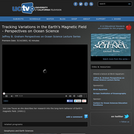
Join Lisa Tauxe as she describes her research into the long-term behavior of Earth's magnetic field. (42 minutes)
- Subject:
- Oceanography
- Physical Science
- Material Type:
- Lecture
- Provider:
- UCTV Teacher's Pet
- Date Added:
- 05/15/2007

Join Lisa Tauxe as she describes her research into the long-term behavior of Earth's magnetic field. (42 minutes)
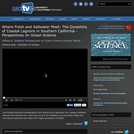
Join Scripps physical oceanographer Clint Winant as he describes this complex interface between the land and sea. Learn how he and his colleagues are providing insight into how human activities can impair this fragile ecosystem. (54 minutes)

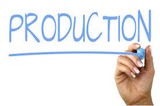
This Unit is useful for B.A, B.com Students

Students learn about Lythrum salicaria, commonly referred to as purple loosestrife, and use their new knowledge, maps and their observation skills to identify changes to the land. They also identify threats to the ecosystem because of those changes, including biodiversity of native species, ecosystem functioning, and economic issues.

Indigenous peoples around the world find themselves locked in power struggles with dominant states and transnational actors who resist their claims to land, culture, political recognition and other key factors associated with the idea of national self-determination. In 2007, the United Nations General Assembly adopted the Declaration on the Rights of Indigenous Peoples – suggesting that an important attitudinal shift might now be taking place internationally. Yet, as this volume’s contributors suggest, much more work is needed in terms of understanding what Indigenous self-determination means in theory and how it is to be achieved in practice.
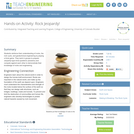
Students reinforce their understanding of rocks, the rock cycle, and geotechnical engineering by playing a trivia game. They work in groups to prepare Jeopardy-type trivia questions (answers) and compete against each other to demonstrate their knowledge of rocks and engineering.
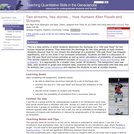
An activity/lab where students determine the changes in 100-year flood determinations for 2 streams over time.
(Note: this resource was added to OER Commons as part of a batch upload of over 2,200 records. If you notice an issue with the quality of the metadata, please let us know by using the 'report' button and we will flag it for consideration.)
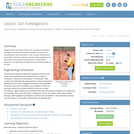
Students learn the basics about soil, including its formation, characteristics and importance. They are also introduced to soil profiles and how engineers conduct site investigations to learn about soil quality for development, contamination transport, and assessing the general environmental health of an area.
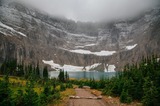
The Story of Land and Water is an early elementary unit. For this unit, we offer professional development training and assistance with implementation. If you are interested in implementing this program at your school or district, please let us know! Please contact info@earthgenwa.org for more information.

This lesson will introduce elementary students to the fiery and explosive nature of volcanoes, using segments from the NATURE film, âKilauea: Mountain of Fire.â Students will get to know different features of volcanoes and volcanic activity: what volcanoes are like, where they are found, how and why they erupt, and what happens after an eruption.